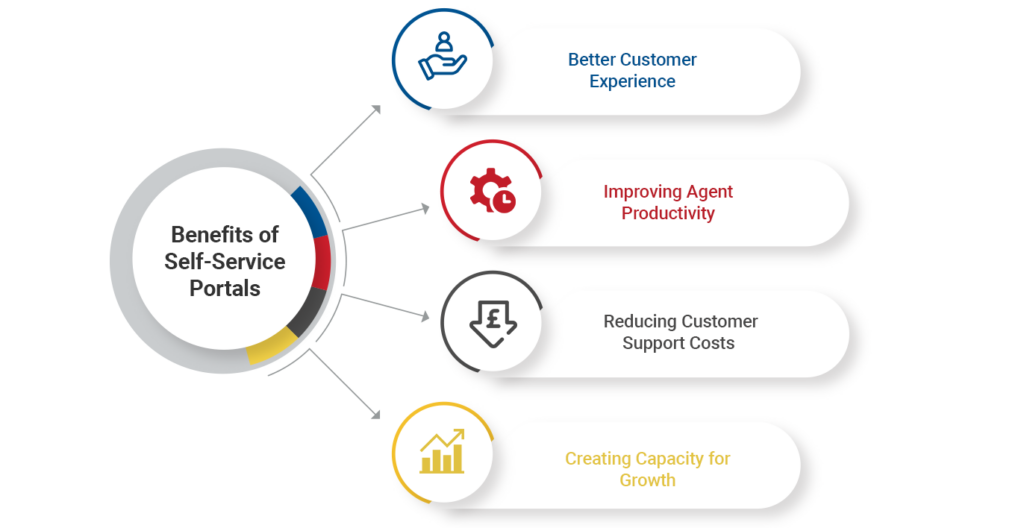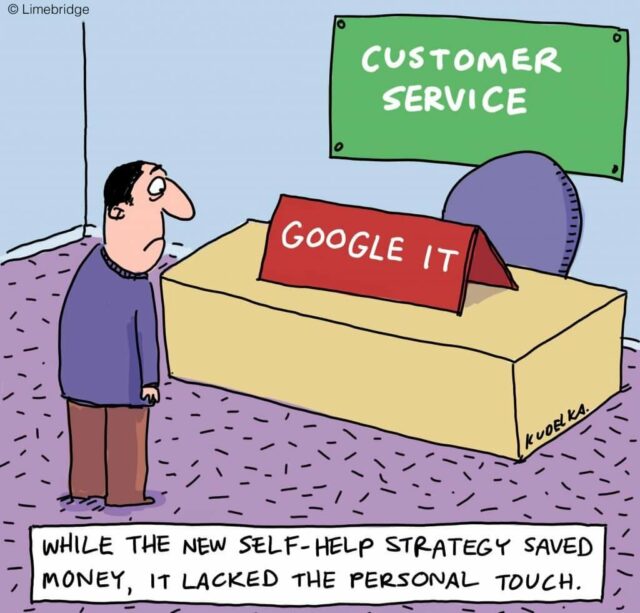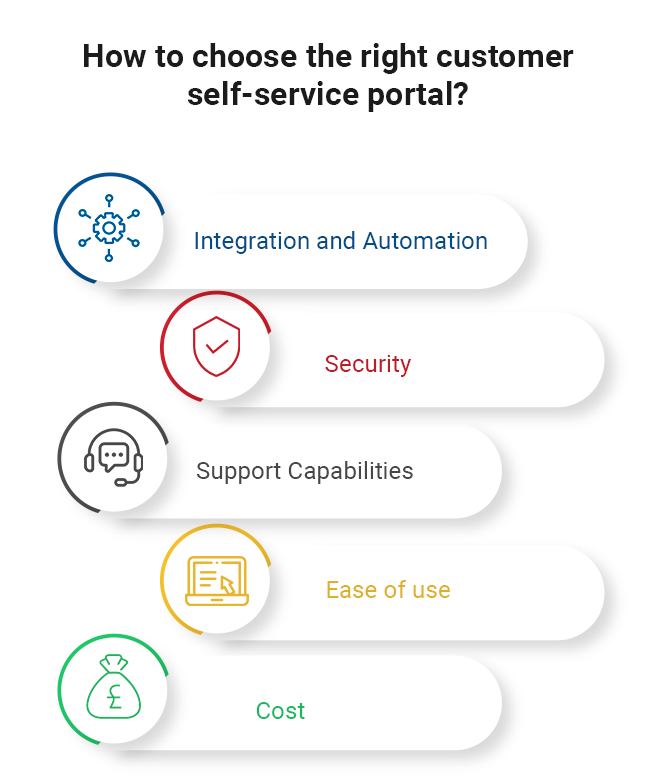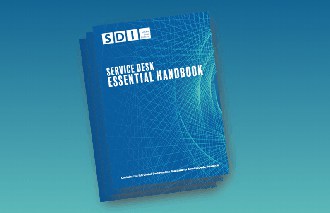
If we look at the relationship between customer support teams and their end-users, the end-user experience relies on how a support team works, right?
When today’s end-users try to solve an issue, they usually want two things…
First, they want their questions answered. Secondly, they don’t want to wait on the convenience of the support team to get answers. Often, that means they want to find solutions on their own. On the other side, most organisations want to cut down on support costs and reduce pressure from their support team.
So, here’s the challenge:
How to make all sides happy? How to meet your customers’ expectations, improve employee experience and achieve organisation goals?
Fortunately, there’s a ‘Win-Win’ solution— a self-service portal!
Let’s break down some questions you should answer before and after implementing one.
Questions you should consider before implementing a self-service portal
#1 What is the purpose of self-service portals?
Self-service portals are mostly used by end-users to create incidents or service requests and knowledge base consumption. Their purpose is to reduce support costs whilst extending support beyond the service desk’s operating hours.
However, they are more than just online platforms that can be easily accessed 24/7.
It’s about embracing the idea of empowering end-users and building a continuous learning culture.
#2 Why is it important to have an IT self-service portal today?
Today’s customers rely more on digital channels to request services, find information, and solve problems. According to Statista, already by 2018, around 88% of customers were expecting companies to offer an online self-service portal.
Today the trend is even bigger!

SDI industry research in conjunction with Freshworks, shows that 40% of IT professionals expect self-service to be one of the biggest trends for ITSM in 2022 and beyond.
The truth is you don’t have to have a self-service portal. However, it’s important to understand where the industry is heading — so investing in or improving self-service portals can be a sound decision.
#3 What are the benefits of self-service portals?
Self-service portals are valuable time-saving solutions. They offer a range of great benefits that support both end-users and Service Desk employees.
Some of the benefits are:
- Improving customer experience. A self-service portal offers support beyond the service desk’s operating hours. It offers end-users an opportunity to log their tickets or solve their problems quickly and with minimal effort. The result? Satisfied and less frustrated customers.
- Improving productivity. Customer support teams often have a lot on their plate. With a self-service portal, you can reduce their workload and allow them to focus on more technical or proactive tasks.
- Reducing the cost of IT support. Cutting down the request calls and incoming ticket volume for your support team will help you reduce overall customer support costs.
- Creating capacity for growth. By empowering customers with self-service portals, you create the opportunity for your organisation to grow and scale its services. Some of that growth will come from increased site traffic, a good knowledge base and increased business credibility.

#4 What is your self-service strategy?
A self-service strategy is a well-rounded approach to solving end-user issues.
A good strategy should define how you create an online self-service portal that works well for your customers.
Everyone learns in different ways and at a different pace, so when setting up the strategy, think about implementation drivers and the business value your portal needs to deliver.
- What are the objectives of self-service?
- What issues do you want to resolve? Do you want to reduce the incoming ticket volume for your support team? Reduce overall support costs? Cut down the request calls?
- Who are your key end-users? What are the most common issues they are experiencing?
- Which communication medium do they prefer for resolving queries?
- How to develop the best content for your self-service platform?
#5 What should you include in your self-service portal?

It’s important to think about the end-user needs and how your self-service capabilities can reflect them. Most self-service solutions include some of the following components:
- A knowledge base e.g., informational articles, FAQs, how-to or video guides and more
- The ability to log a service request or incident
- Chat capabilities e.g., chatbot or virtual assistant
- Automated capabilities e.g., password reset
- Collaborative spaces e.g., community forums
Discover 10 steps to a successful implementation of a self-service portal.
#6 What makes a good self-service portal?
A good self-service portal is one that is designed with your end-users needs in mind.
If you engage with your customers and understand their expectations, you will be able to help them embrace the shift towards self-service.
So, try to focus not just on self-service capabilities but also on self-service containment.
SDI Tip: Create and explore use case scenarios to define the experience for different types of end-users.
#7 Should you integrate a portal with your existing systems?
If self-service portals are not integrated or automated into your IT infrastructure, they could have limited functionality and effectiveness. Moreover, the integration will help you enhance efficiency and reduce costs.
Before you start with integration, think about the following questions:
- Is the self-service portal compatible with your existing systems?
- Is the self-service portal compatible with multiple data formats?
- Would it be easy to automate workflows to allow them to deflect tickets?
- How long would the integration take?
- How secure is the integration solution?
#8 What are the disadvantages of customer self-service portals?
If not done right, there is a possibility self-service could create a negative impact on your customer experience.
How? Well, it all comes down to how you use self-service portals. If you are relying too much on self-service, your customers might feel disconnected from your organisation.
Remember, having a self-service portal doesn’t mean that you should stop providing a personalised approach and support to your customers.

#9 What should the self-service portal interface look like?
If the self-service portal doesn’t have the correct capability or has a clunky and not user-friendly interface – it will negatively impact the customer experience.
Here are some things to consider that will help you build an effective interface:
- Design a clean and easy-to-use interface.
- Present information your customers want to see. (Don’t forget their feedback!)
- Create easily digestible content.
- Create clear navigation to help your customers find what they want instantly.
- Create a categorised list of common issues or components.
- Make sure your portal is simple to configure.
- Provide multiple ways for your customers to get in touch with you.
#10 How to choose the right customer self-service portal?
Today you can find a lot of service portal providers, so when it comes to choosing the right one, it is important to have a clear idea of what you absolutely need in your tool.
Creating a list of requirements from your team should help you focus on the essential things. However, some of the most common features you should consider are:
- Integration and automated capabilities
- Security
- Support capabilities
- Ease of use
- Cost

Questions you should ask after building a self-service portal
#1 What’s your self-service adoption strategy?
Even with effective marketing, you may still run into issues with adoption. Putting things in place to change user habits and reminding them they can use the portal can help to improve this.
SDI Tip: When interacting with customers, encourage your service desk to explain to the customer how, in the future, they can resolve some of the issues themselves using self-service.
#2 How to measure results?
How do you know if your self-service portal is working? Well, some of the ways in which you can determine its success are by digging back into data. For instance, you can investigate some of the following data:
- Telephone and email volume
- Meeting SLAs
- Are the incidents been handled more efficiently?
- Self-service portal usage – sessions, bounce rate, completed call-to-actions CTAs
- Customer feedback – satisfaction surveys, ratings, Net Promoter Score
#3 How to be proactive with your self-service?
Continual improvement is vital for any support team and should be embedded in the culture of the support function. Continually improving the portal could create a better end-user adoption rate.
SDI Tip: One way to be proactive with self-service is to identify customers that aren’t using the portal, go back to them, and ask what puts them off using it. It’s an opportunity to discover what they don’t like or understand and then learn how you can help and encourage them to use it.
#4 How to increase self-service effectiveness?
When it comes to improving self-service portals, here are some things to consider:
- A well-established knowledge base. Whether it is a customer-facing knowledge base or an internal knowledge base – it all comes down to answering important questions or solving frequent IT issues.
- Customer feedback. For example, things customers would like to see in the portal, difficulties they have using it, and, equally as important, why they have chosen to use another channel instead of self-service. Customer feedback is exceptionally valuable!
- Marketing and communication plan. It can be challenging to change end-user behaviours. Therefore, it is important to promote the portal to its customers to drive more traffic toward self-service. This can be done via social media, emails, or collaboration tools.
#5 What are the failure points of self-service portals?
According to Gartner, most self-service flaws relate to three failure points:
- External search,
- Site navigation and
- Self-service capabilities

Many organisations often make the same, or very similar, mistakes with self-service.
They build self-service from the inside out.
They focus too much on IT objectives, neglect customer feedback, don’t adapt to a continuous improvement approach and lack a quality knowledge base. Which often leads to a lack of end-user engagement and reduced efficiency.
SDI Tip: Revaluate your self-service strategy and try to simplify the digital customer journey. Look at your external search and site navigation and create a clear search pathway for your end-users.
#6 How to maintain a safe self-service portal?
Security should play an important part in self-service deployment and maintenance. A self-service portal should always be secure, given that it often contains sensitive data. Along with strong password policies, methods like single sign-on or two-factor authentication can help you improve the portal’s security.
SDI TIP: Make sure you don’t expose the wrong data to the wrong end-users. So, remember to set up the right security policies within the service management tool for the logged users.
Get started
What’s clearly becoming evident is that the most successful organisations are the ones that know how to best serve their customers.
So, if you are starting with self-service, build a strategy that will help your customers fully understand self-service capabilities.
Then again, if you want to improve your existing portal, remember to use other communication channels to promote self-service and encourage customers to use it.
If you’d like to learn more about self-service, AI, RPA or how to build your capability to continue your digital transformation journey watch our virtual event on-demand.
Watch the sessions on our SDI BrightTalk channel
Written by:
Antonija Bozickovic
Content Creator at Service Desk Institute



























